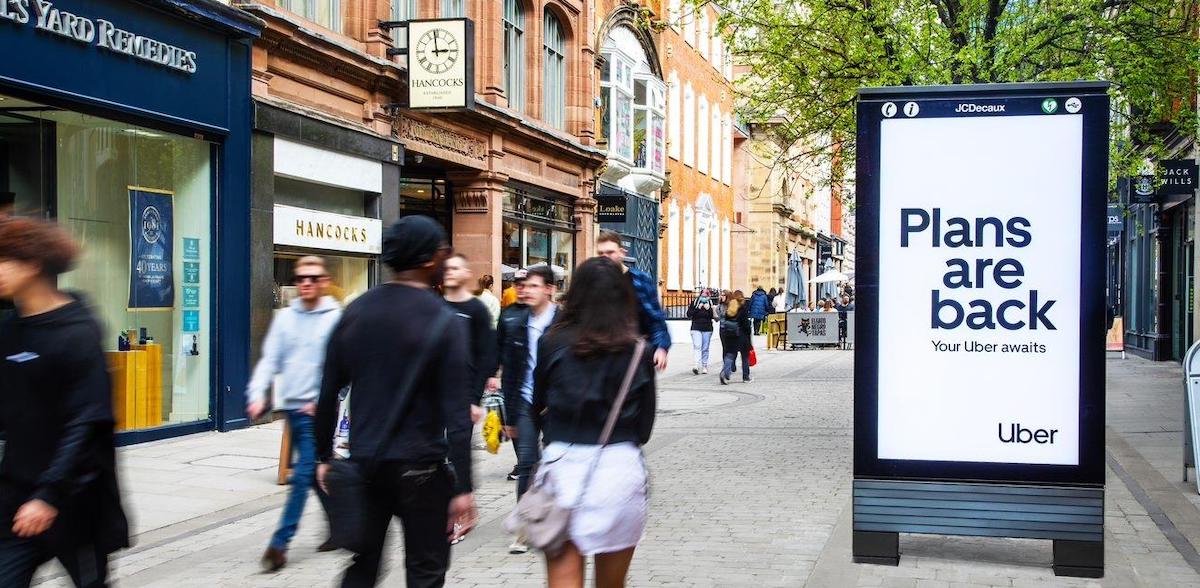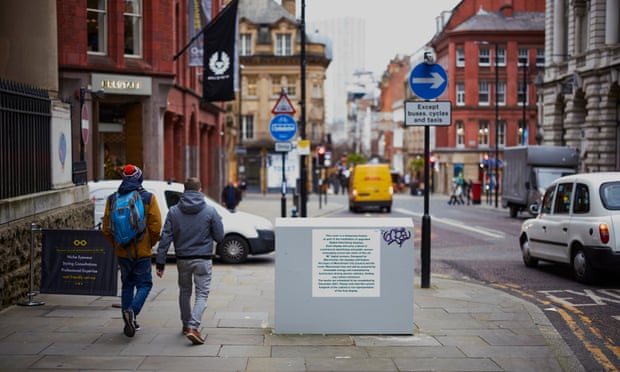
Newspaper Goes After JCDecaux Again For Its Manchester Sidewalk DOOH Network
January 12, 2022 by Dave Haynes
Whoever runs operations for the digital OOH media interests of JCDecaux in Manchester, England is perhaps thinking regularly that she or he needs a drink, possibly by 10 AM, given the adverse attention its new sidewalk digital ad totems have been getting from the city’s famed newspaper.
The Guardian wrote last fall about the grey metal boxes that were used as temporary hoardings, as the new “street furniture” totems were being schemed in as replacements to existing static backlit posters. The hoardings were butt-ugly, but detractors also suggested the boxes created tripping hazards and cluttered sidewalks meant for pedestrians, not ads.
Now the newspaper has another story up, suggesting the now operating totems each consume the same amount of electricity as three local households, in a city whose local council has declared a climate emergency. The media company has or will have 81 digital totems operating in Manchester under this ad concession, which kicks a revenue share back to the city from ad sales.
From the Guardian:
According to analysis of data revealed by a freedom of information request, each of the 86 digital advertising boards in Manchester city centre uses 11,501kWh of electricity every year.
Manchester city council, which declared a climate emergency in 2019, says the screens are powered by renewable energy, but they are connected to the mains supply, rather than powered, for example, by a solar panel.
“JCDecaux’s electricity supplier has supply agreements with independent UK wind generators and purchases renewable electricity certificates and renewable energy guarantees of origin (or Regos),” a council spokesperson said.
“The council’s aim of becoming zero-carbon by the year 2038 isn’t about not using electricity at all. This would be an absurd assumption. What it does mean is about a cultural change locally, which the council is trying to effect, to use electricity which is renewably sourced and does not involve the burning of fossil fuels to generate.”
There’s nothing new or unique about local media outlets relaying the unhappiness of local citizens about public advertising. If you don’t work in OOH media or supply into it, there’s a decent chance you’re not all that wild about billboards and digital street furniture dotting the landscape.
JCDecaux would seem to have handled this as best it can by doing things like buying renewable energy, even if that’s indirectly supplied through certificate schemes. I am sure they would LOVE to just use solar arrays atop the totems, as is suggested here, but those arrays would likely need to be bigger than the totems, and NW England is not exactly famed for its endlessly sunny days.
Here’s what the hoardings looked like (definitely butt-ugly, but they were temporary) …

Photograph: Christopher Thomond/The Guardian



total waste of resources double standards over going green grafiti targets more resources to put right ugly and not needed